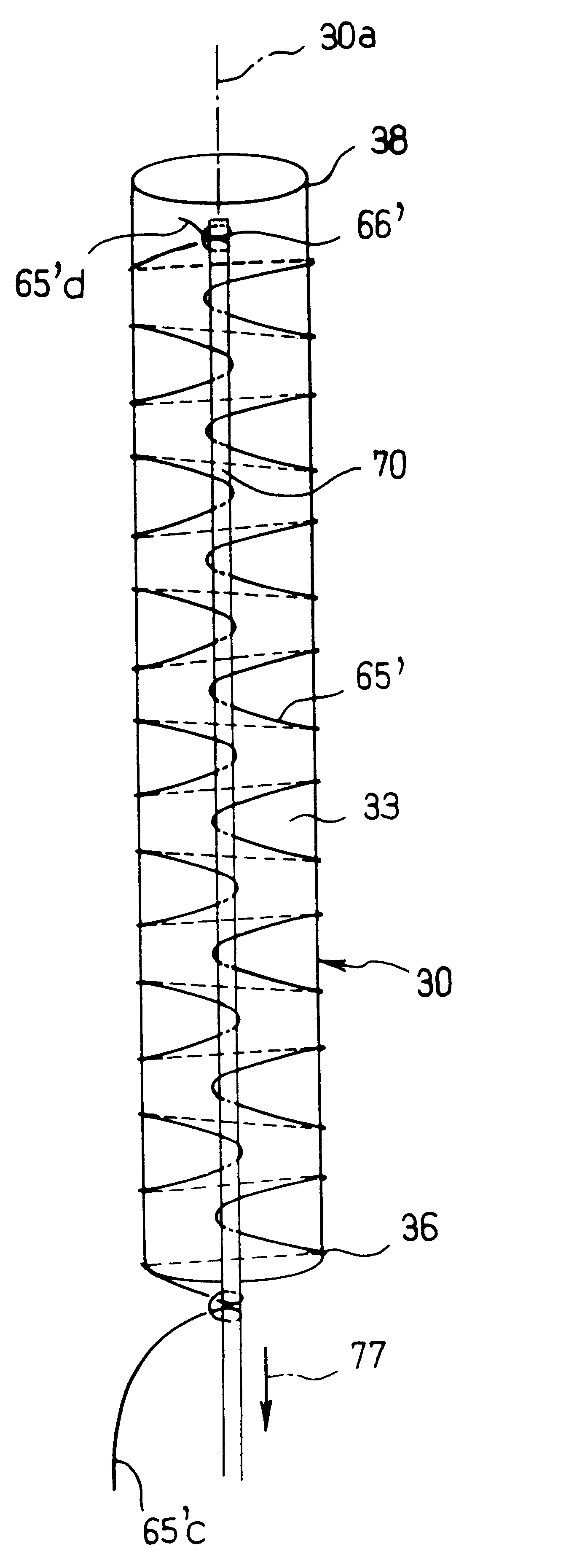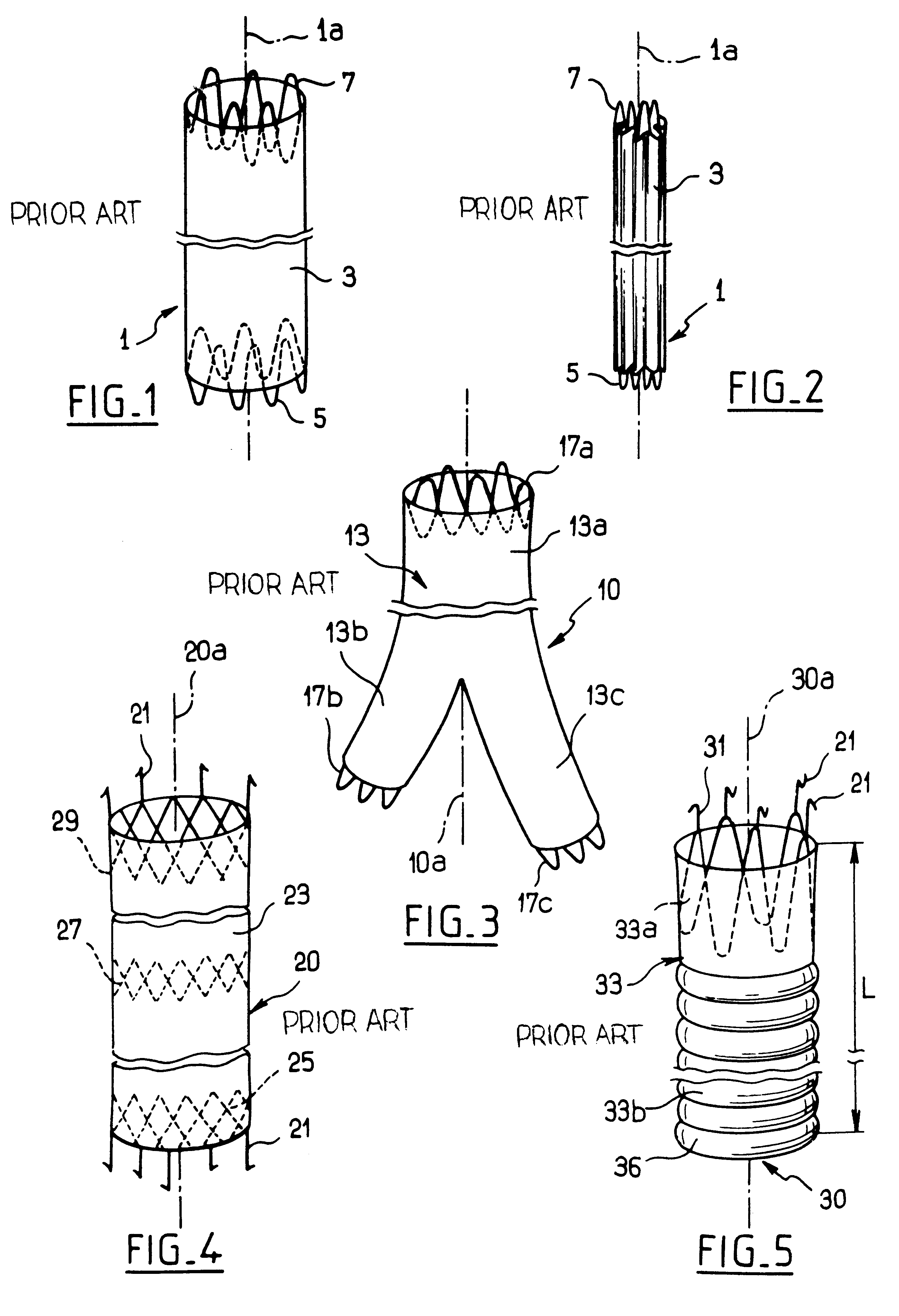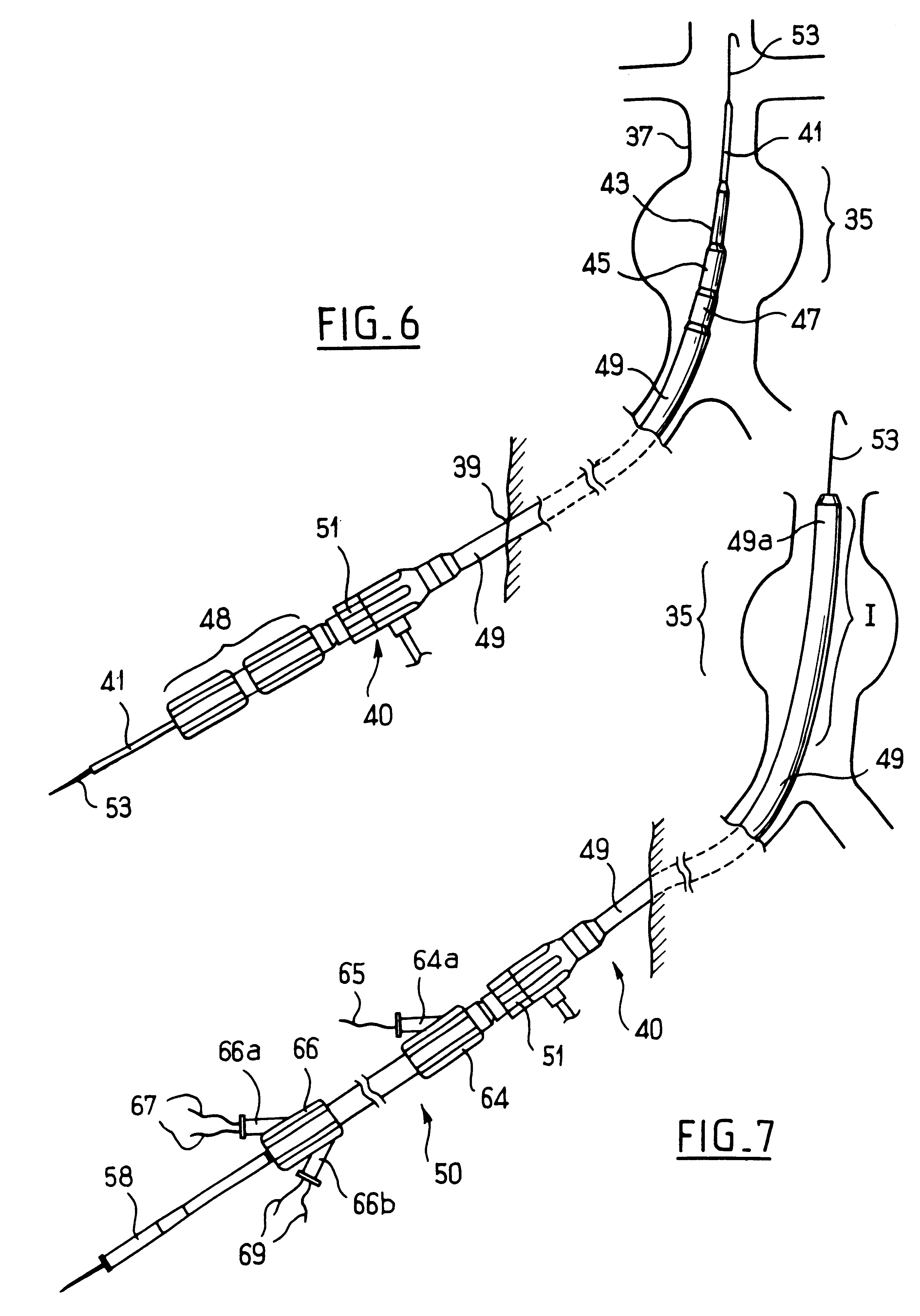System for repairing an anatomical canal by means of an implant with a progressive opening
- Summary
- Abstract
- Description
- Claims
- Application Information
AI Technical Summary
Benefits of technology
Problems solved by technology
Method used
Image
Examples
Embodiment Construction
will now be provided with reference to the accompanying drawings, in which:
FIGS. 1 to 5 show diagrammatically alternative various prior art vascular implants.
FIGS. 6, 7, 8, 9 and 13 essentially show an implantation device that can be used to introduce one of the above implants into its implantation canal, FIGS. 7 and 13 illustrating the device in place and showing the ties that are characteristic of the invention,
FIG. 9 is an enlarged detail view of FIG. 8, at the point identified by IX in FIG. 8, and shows the flexible threads which are characteristic of the invention,
FIG. 10 is an even more enlarged view of the upper part in FIG. 9,
FIGS. 11 and 12 show (in an enlarged detail view in the case of FIG. 12) the lacing or knotting principle employed for the body of the implant in FIGS. 9 and 10, which is a characteristic of the invention,
FIG. 14 shows the implant in place in its receiving canal,
FIGS. 15 and 16 show (in an enlarged detail view in the case of FIG. 16) an alternative form...
PUM
 Login to View More
Login to View More Abstract
Description
Claims
Application Information
 Login to View More
Login to View More - R&D
- Intellectual Property
- Life Sciences
- Materials
- Tech Scout
- Unparalleled Data Quality
- Higher Quality Content
- 60% Fewer Hallucinations
Browse by: Latest US Patents, China's latest patents, Technical Efficacy Thesaurus, Application Domain, Technology Topic, Popular Technical Reports.
© 2025 PatSnap. All rights reserved.Legal|Privacy policy|Modern Slavery Act Transparency Statement|Sitemap|About US| Contact US: help@patsnap.com



